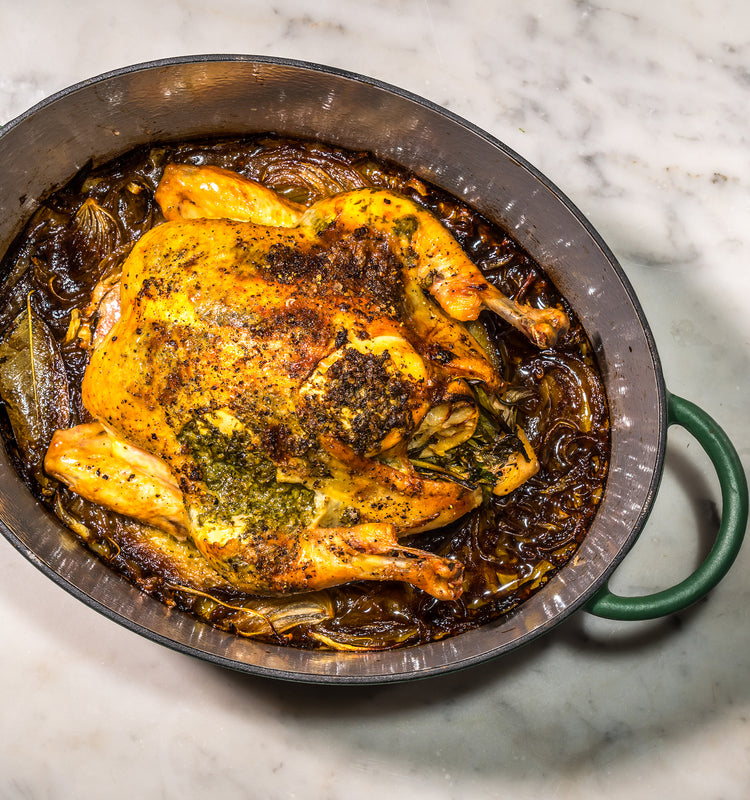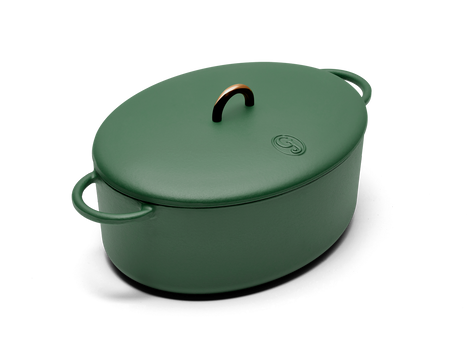I’ve given you a recipe for the butter, which both moistens and flavors the chicken, but nothing about it is sacred. I use a mix of herbs, trying to include some rosemary, tarragon (so good with chicken), and dill, along with the parsley, cilantro, and basil that are usually in my fridge, but the next time you make the chicken, you could go Asian, with ginger, garlic, and lemongrass, or Mediterranean, with sumac, lemon, za’atar, and thyme.
Here are my favorite parts of the recipe: the hands-off roasting (the butter bastes the bird so that you don’t have to); the economy of using all the herb and scallion trimmings, as well as the zested-and-squeezed lemon, to flavor the chicken from the inside; the bread that sits under the chicken and soaks up all the drippings (ever since I learned this trick, I’ve roasted a piece or two of bread under a chicken); the pan juices that come along with the roast; and the fact that you get twice as much flavored butter as you need, so you’re ahead on the next chicken or whenever you want to doll up rice or steamed vegetables.
- Position a rack in the lower third of the oven and preheat it to 450°F.
- Finely grate the zest of the lemon into a small bowl (reserve the lemon).
- Toss in the butter, minced herbs, and minced scallions, season with salt and pepper, and mash the ingredients together until well blended.
- Divide the seasoned butter in half and wrap one piece tightly in plastic wrap; freeze for your next chicken or another use.

- Pour the oil into The Dutchess and swish it around so that it slicks the sides of the pot.
- Spread a little of the herb butter on one side of the bread, then place it buttered side up in the pot.
- Buttering the chicken can be a little tricky — messy too — but there’s also something very satisfying about it. Use your fingers to pull the skin away from the meat, loosening it along the breasts and drumsticks. Work from the top and bottom of the chicken, lifting the skin up with your knuckles to help you open up some space without tearing the skin. Using a chunky pat at a time, squish, squiggle, and otherwise schmush most of the remaining butter under the skin of the chicken, spreading it as best you can against the meat. Don’t worry about getting an even layer — the butter will melt and baste all the meat in the oven.
- Pat the skin dry and smear whatever butter remains over it.
- Season the chicken inside and out with salt and pepper, and stuff the cavity with the reserved herb stems and scallion greens.

- Squeeze the half lemon over the bird and tuck the lemon into the cavity.
- Sit the chicken breast side up on the bread.
- Toss the onion and bay leaf into the pot, pour the wine or water around the chicken, and slide the pot into the oven.
- Roast the chicken, uncovered, for 50 to 60 minutes; if it looks as if the pan juices are running low, add some water. The chicken is done when a thermometer poked into the thickest part of a thigh registers 165°F. Alternatively, you can cut a slit in the chicken between the drumstick and breast and check that the juices run clear.
- Transfer the chicken to a cutting board and let rest for about 10 minutes.
- Meanwhile, skim the fat from the pan juices, discard the bay leaf, and stir in some sherry vinegar, if you’d like.
- Carve the chicken and serve with the pan juices and the jus-soaked bread (if you haven’t already finished it off in the kitchen).
Storing: Cover and refrigerate any leftovers and enjoy them over the course of the next 3 or 4 days.
















